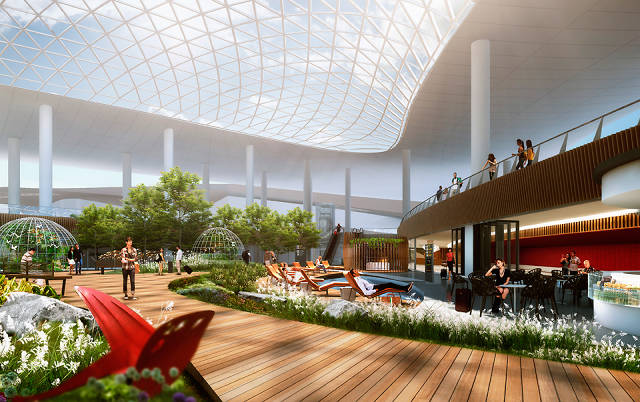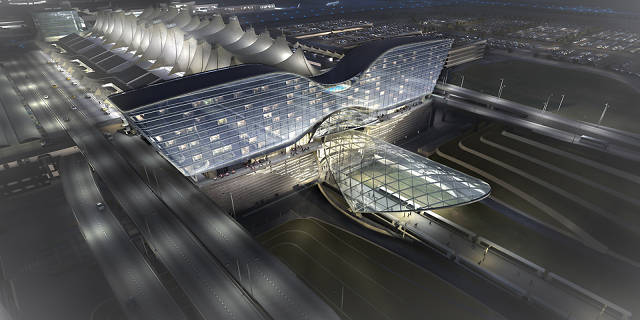From Fast Company:
More than 5 billion travelers passed through the airports of the world in 2011, according to Airports Council International. That’s an incredible number, considering the population of the entire planet is something like 7 billion. And all air travelers–everywhere, every day–stand united by something powerful: angst! Airports can be hell.From
But for an industry that has seen its share of dark places, hell is not a final destination. It’s an opportunity to repent and change. And indeed, with increasing fervor, airport owners and developers around the globe are reinventing the airport as a place that people actually want to spend time. That includes the “forevermore” kind of time. The Stockholm Arlanda Airport offers a wedding package with nuptials in the control tower balcony.

At Incheon International Airport in Seoul, South Korea, it’s all about the shopping. Renowned as one of Asia’s finest shopping destinations–not just an airport with good shopping–Incheon is constructing a new terminal set to open in 2018. Designed by my firm, Gensler, the new, six-level Terminal 2 will present even more luxe shopping to travelers, but in an environment that is anything but hermetically sealed. The terminal is designed to look airborne and feel like a terrarium with lots of glass, sunlight, tropical plants and curiosities that make people happy. Among them and all inside the terminal: two central parks, a babbling brook, native gardens, aviary and lots of butterflies. There also will be a stage for live performances.
With similar attention to crowd-pleasing, a new airport is being considered near Lagos, Nigeria, and there’s talk about making it a go-to destination for what arriving African shoppers really want: the opportunity to purchase international appliances, like refrigerators and washing machines. Available duty-free. Only at the airport.
In Munich, the airport takes travelers to a precisely honed Bavarian wunderland, a microcosm of Munich with an onsite brewery, indoor beer garden and slick Audi showroom. Changi Airport in Singapore has a Balinese-themed swimming pool among its long list of amenities. In Hong Kong, the airport entertains. Consider the outdoor nine-hole golf course and 350-seat IMAX theater that claims the largest projection screen in Hong Kong.

The Denver International Airport is getting more “Colorado.” It’s being expanded and transformed into a quasi city center, connected both physically and emotionally to downtown Denver and the region. A Westin hotel and conference center (with a dynamite rooftop pool and views of the Rockies) is part of the expansion program along with an outdoor public plaza for staging community events and a new fast rail line (and station) that will whisk travelers and Denver residents alike to/from downtown Denver.
And then there’s Chennai Airport in southern India, which is about to open two new terminals, both developed around the concept “calm oasis.” With plant life visible from both inside and out, passengers cross an enclosed glass bridge over a tropical garden filled with palm trees, orchids and other indigenous plants. The sequence was designed to feel restorative.
Surely, there’s more going on here than making nice-nice with travelers. “Aspirational” airports—those that have mastered the art of distracting and ultimately luring travelers—have the potential to make big money.
According to the ACI, in 2010, airports in Europe reported revenues of approximately $7 billion on airport concessions and food/beverage sales alone. In the Asia-Pacific region (home of Incheon, which reported $1.53 billion in duty-free sales last year, the highest of any airport in the world): $6 billion in concessions and food/beverage sales. In North America: $1.7 billion. The new Terminal 2 at San Francisco International Airport is a shining moment for North America, which lags behind the rest of the world in terminal bliss investment. Terminal 2 at SFO was specifically designed to reflect Bay Area culture in its food, art, atmosphere and diehard sustainable focus. And travelers here are eating it up. Terminal 2’s sales per passenger are 22% higher than in the other two domestic terminals at SFO, according to the airport.
To read more click here.


